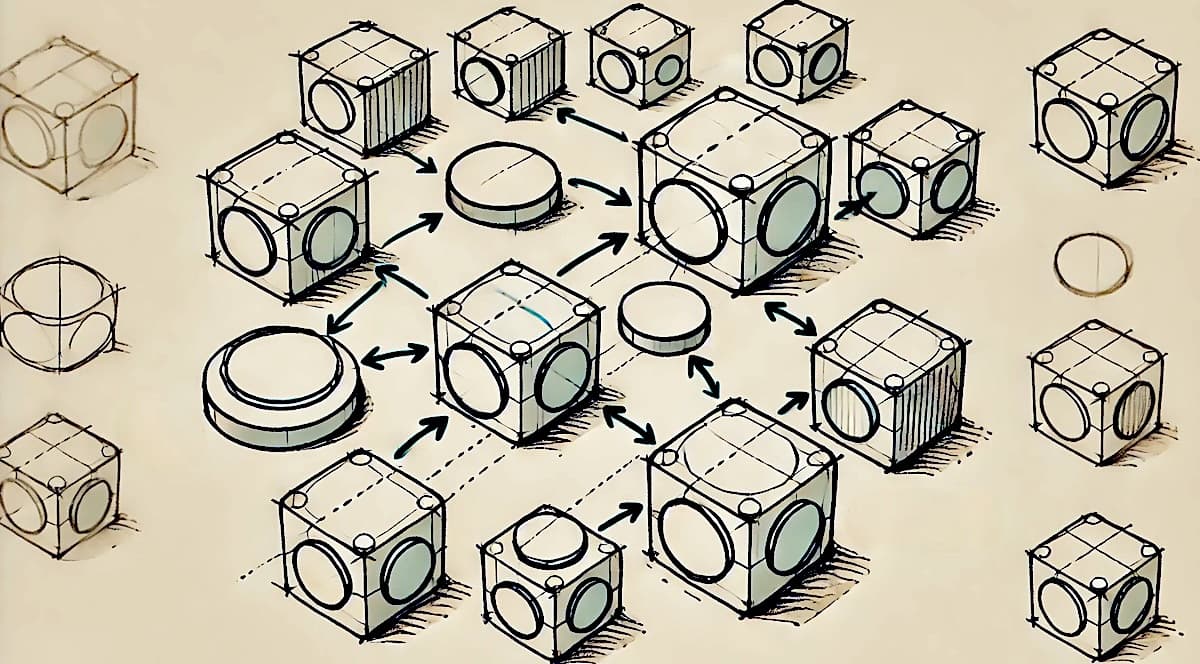
How to Facilitate a Remote Retrospective Like a Pro

With remote and hybrid work replacing traditional work models, agile teams face unique challenges in maintaining collaboration that fosters continuous improvement. This shift particularly affects the retrospective.
Traditionally, retrospectives rely on face-to-face communication, body language, and the energy of being in the same room. However, the shift to remote work has transformed how teams approach this key agile ceremony.
Effective retrospectives are essential to agile teams' success, as they allow for reflection on what went well and identify areas of improvement. However, facilitating a retrospective that feels as engaging and meaningful as in-person meetings can be difficult in remote settings. The good news is that you can facilitate impactful remote retrospectives and build stronger and more cohesive teams with the proper techniques and tools.
This comprehensive guide will provide actionable strategies for running seamless and engaging remote retrospectives. Whether dealing with a fully remote team or a hybrid setup, you’ll learn how to overcome common challenges and create an environment that drives continuous improvement.
What Are The Unique Challenges of Remote Retrospectives?
Facilitating remote retrospectives presents distinct obstacles, making it more challenging to replicate the collaborative energy of in-person meetings. Here are some of the most significant challenges:
1. Difficulty Building Rapport and Psychological Safety Virtually
Psychological safety is crucial for any retrospective. Team members need to feel comfortable sharing honest feedback and admitting mistakes. In a remote environment, building this kind of rapport can be tricky. The lack of physical presence can make interactions feel more transactional, and it's harder to pick up on non-verbal cues that build trust.
2. Maintaining Engagement and Participation Over Video Calls
Virtual meetings often struggle with participants feeling disconnected or disengaged, especially during lengthy discussions. Remote retrospectives, if not carefully managed, can quickly become monotonous, with people losing focus or tuning out altogether.
3. Recreating the Energy and Interactivity of In-Person Sessions
In-person retrospectives often benefit from dynamic interaction. Teams can brainstorm together, use physical sticky notes, and leverage body language to foster creativity. Remote meetings lack this physicality, making it harder to capture the same level of excitement and engagement.
4. Leveraging Digital Tools Effectively
Remote retrospectives rely heavily on digital tools, but not every tool is intuitive, and switching between platforms can disrupt the flow. Facilitators must ensure their tools are accessible and enhance the meeting rather than complicate it.
5. Facilitating Mixed In-Person and Remote Participants
Hybrid retrospectives, where some team members are in a physical room while others dial in, add another layer of complexity. Facilitators must ensure that remote participants aren’t excluded from the conversation and that the experience feels inclusive.
How to Run Effective Remote Retrospectives in 4 Easy Steps
Despite these challenges, remote retrospectives can still be highly effective. By implementing the right techniques and tools, facilitators can foster an environment where all team members feel heard, engaged, and motivated to share feedback and drive improvements.
1. Setting the Stage
A successful retrospective begins long before the meeting itself. Preparation is vital to creating an environment conducive to open communication and creativity.
Craft a clear agenda and share it ahead of time: Outlining the retrospective's structure in advance ensures the team knows what to expect. An agenda keeps the meeting focused and ensures that every topic is covered.
Establish virtual rituals and norms: Setting clear expectations, such as keeping cameras on for more personal interaction or muting microphones when not speaking, helps maintain structure and reduces interruptions.
Use icebreakers and check-ins to build connection: Starting with a light icebreaker or check-in question allows the team to connect on a human level before diving into more serious topics. This helps foster psychological safety and sets a positive tone.
Choose the right virtual tools: Platforms like Miro, MURAL, or Stormboard can replicate the physical whiteboard experience and allow for real-time collaboration. Select tools that are user-friendly and match your team’s needs.
2. Facilitating Productive Discussions
The heart of any retrospective lies in the discussions. It’s the facilitator’s job to ensure that every voice is heard and the conversation stays productive and relevant.
Utilize virtual whiteboards and sticky notes: Tools like Miro can mimic the experience of writing ideas on sticky notes. Encourage team members to share their thoughts anonymously if necessary, helping to gather honest feedback.
Structure activities for equal participation: Use techniques like Round-Robin feedback or brainwriting to ensure every team member contributes. Round-robin discussions prevent one or two voices from dominating, while brainwriting allows individuals to write down ideas before group discussion, which can help avoid groupthink.
Manage breakout rooms effectively: For larger teams, use breakout rooms for smaller group discussions. Give each group a specific task, and then reconvene to share insights. This keeps conversations focused and prevents overcrowding.
3. Capturing Insights and Action Items
Retrospectives must lead to actionable insights to ensure continuous improvement. Even the most productive discussions will not translate into meaningful change without concrete next steps. This is how you can capture the necessary data:
Ensure all voices are heard: Make space for quieter team members to share their thoughts through direct facilitation or anonymous contributions on collaboration tools.
Identify clear action items: Focus on creating specific, measurable action items with assigned owners and deadlines. Ensure everyone understands their role in following up on these tasks.
Track progress between retrospectives: Regular follow-ups on past action items keep the team accountable and demonstrate that their feedback leads to real improvements.
4. Maintaining Energy and Engagement
A remote meeting can lose momentum if it feels too rigid or monotonous. Injecting energy and fun into retrospectives keeps participants engaged throughout.
Incorporate movement and games: Encourage team members to take short breaks for stretching or introduce simple games that make the session more dynamic. For example, fun card games like the Agile version of “Cards Against Humanity” can boost energy levels and add a playful element.
Leverage visual aids and polls: Use virtual backgrounds or polls to engage the conversation visually. A change in the visual environment can create a fresh discussion perspective and help sustain focus.
Balance structure with flexibility: While having a plan is essential, be open to adjusting the agenda based on the team’s mood or energy levels. A flexible approach helps ensure the retrospective remains relevant and engaging.
Takeaway
Mastering the art of remote retrospective facilitation takes practice, but the benefits are substantial. Following these strategies can foster an environment where your team feels safe, engaged, and motivated to improve continuously. Prioritizing inclusivity, actionable outcomes, and sustained energy will ensure your retrospectives drive real change for your agile team, whether fully remote or hybrid.
Don’t wait for the perfect moment to try something new. Use tools like Team O'Clock to streamline your retrospectives and implement at least one new technique in your next session. Sign up today, benefit from the 15-day free trial, and witness the impact on your team's collaboration and growth.








